Automated Data Extraction Using ChatGPT AI: Benefits, Examples
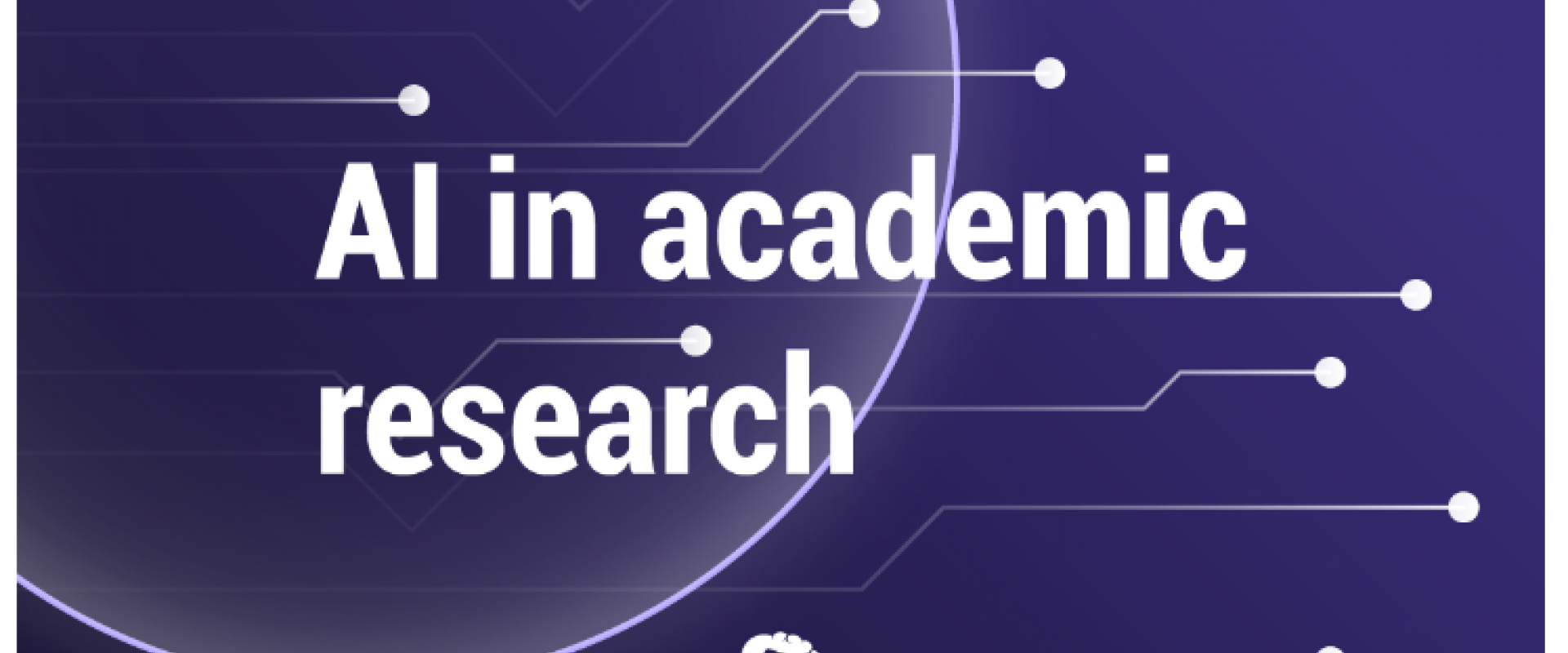
Discover applications of OpenAI for data extraction tasks. Review related use cases and explore the limitations of the technology.
Since the release of ChatGPT by OpenAI in 2022, most people in nearly all industries have tried a generative AI tool at least once. The market size for Generative AI is expected to show a CAGR of 24.40%, resulting in a market volume of US $207 billion by 2030. The technology can be useful in multiple ways. One such is extracting data from documents with OpenAI.
Read this post to discover applications and use cases of ChatGPT-based AI to extract data from documents, the challenges and limitations of the technology, and its prospects.
How Can OpenAI GPT Help Extract Data From Documents?
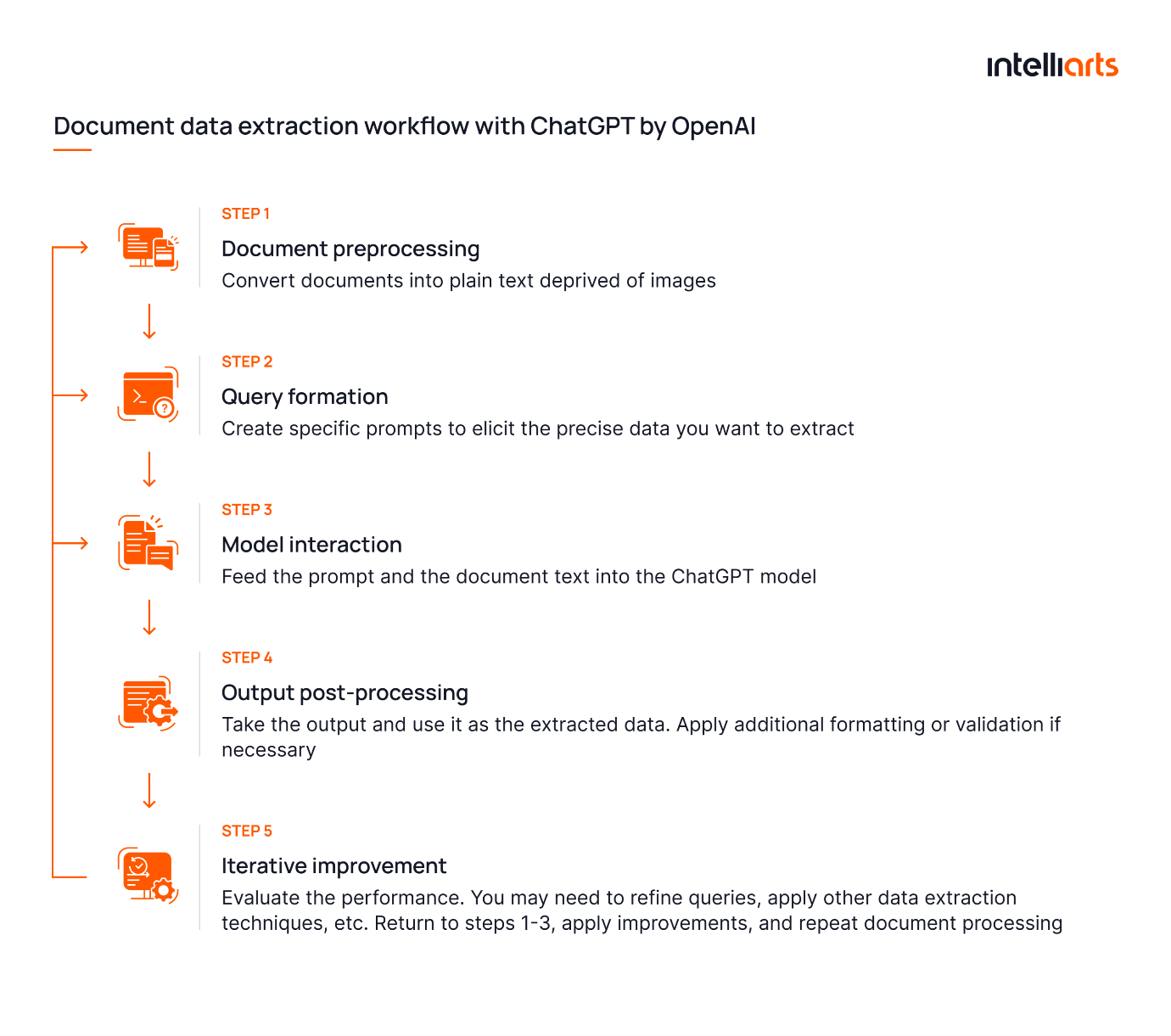
ChatGPT by OpenAI is a Large Language Model (LLM) designed to understand and generate human-like text based on the inputs it gets. The technology leverages large-scale ML and Natural Language Processing (NLP) allowing it to provide an answer to a data extraction question based on a specific query.
Among the top large language models, ChatGPT stands out for its advanced capabilities in document data extraction. Let’s get started with reviewing applications of OpenAI GPT in this field. This list of possible ways to use the technology includes but is not limited to:
- Contextual understanding: Grasping the context in which words or phrases are used. This capability is crucial for tasks like sentiment analysis, machine translation, and dialogue systems.
- Automated responses: Extracting and interpreting customer queries from emails or text-based support channels to provide automated but accurate responses. It’s also useful in knowledge management, where automated FAQs can be generated or updated.
- Text summarization: Generating concise summaries of long documents, reports, or articles which aids in quick decision-making and information dissemination.
- Named Entity Recognition (NER): Identifying and classifying named entities like names of persons, organizations, locations, expressions of time, quantities, and more. This is important for information retrieval, data mining, and customer service bots.
- Question answering: Receiving a question and then providing an accurate and concise answer. This can be applied in domains like customer service or academic research.
- Invoice processing: Extracting relevant financial data from invoices for automated entry into accounting systems.
- Medical records management: Extracting and summarizing critical information from health records for easier access and interpretation by healthcare professionals.
- Market research: Analyzing news articles, reports, and other documents and extracting data points like market trends, customer preferences, or competitive intelligence.
- Resume screening: Sifting through resumes to extract educational background, skills, experience, and other relevant information for automated initial screening.
Using AI to extract data from documents can be helpful in many ways, depending on the particular needs of businesses across various sectors.
Examples of Successful Use of OpenAI GPT in a Data Extraction Task
Despite generative AI technology becoming openly available not so long ago, it’s already being utilized extensively. Here are some of the real-world open AI-based document data extraction examples along with other generative AI use examples that showcase the growing popularity of the technology in the business landscape:
Viable Generative Analysis Platform
The Viable platform allows companies to handle customer support tickets better and retrieve actionable insights from customer interactions to improve their Net Promoter Score (NPS).
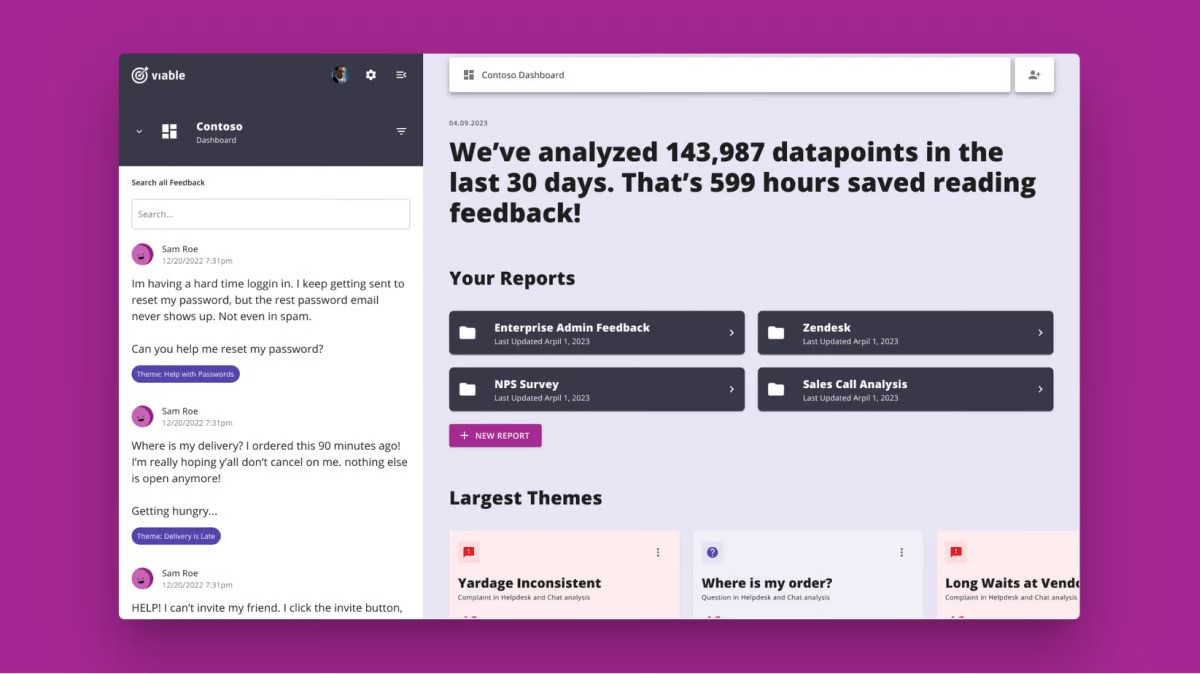
They started exploiting the capabilities of fine-tuned OpenAI’s LLMs to analyze qualitative data on a scale that exceeds conventional techniques. This way they are able to help their customers make sense of the vast amounts of data they generate through communicating to customers. The Viable’s customers claim that the generative analysis feature saves them nearly 1,000 hours per year.
Yabble Feedback Analysis Platform
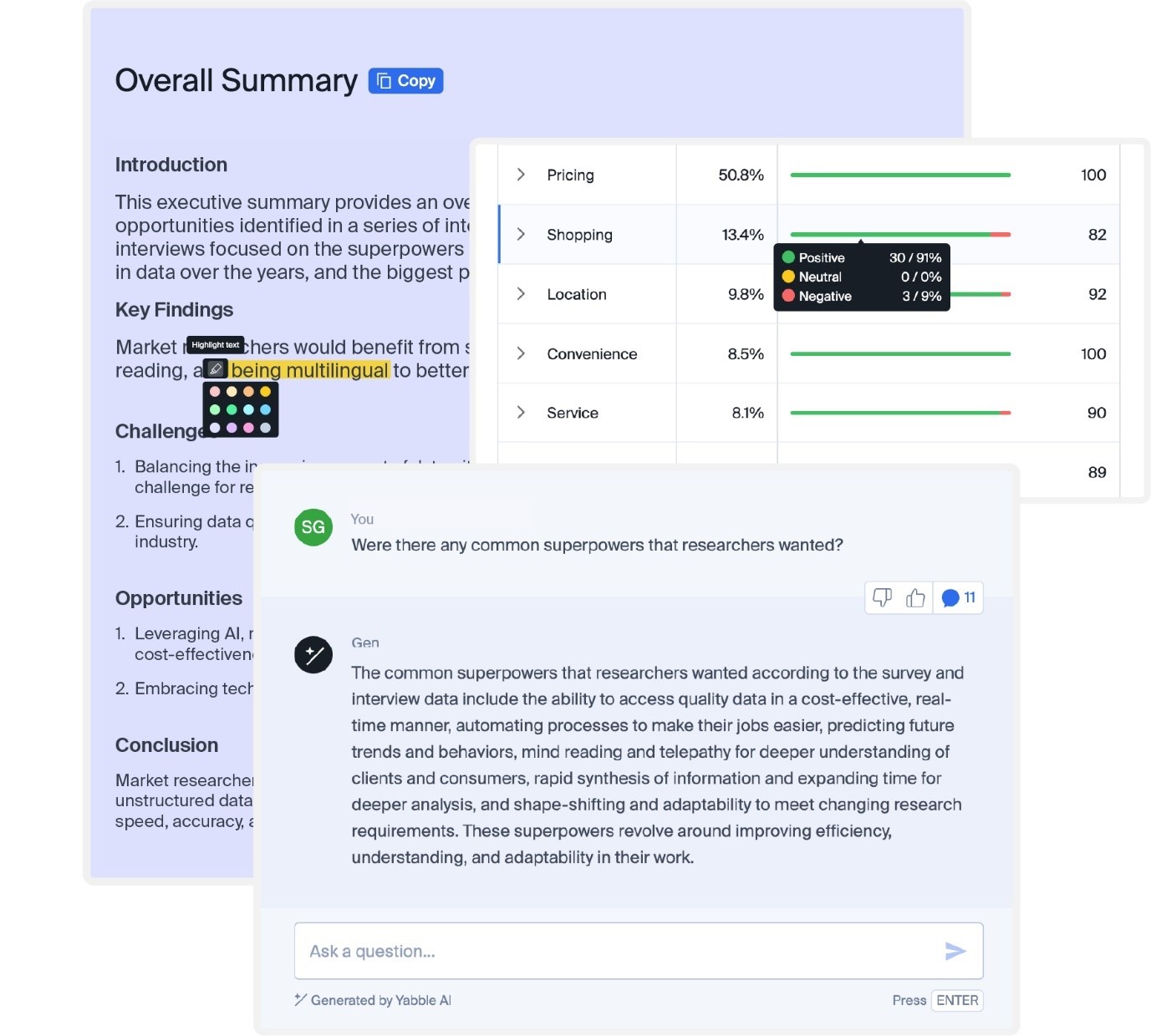
The Yabble platform allows companies to extract data from customer feedback to inform their business strategies and save time on processing data manually.
The Yabble Count, an AI tool powered by OpenAI ChatGPT, can analyze thousands of comments and other unstructured data sets, categorize them by sentiment, and organize data into themes and subthemes. Ben Roe, Head of Product at Yabble, says: “Users were loving how easy it was to finally understand mountains of data and feedback forms and have that information presented in a digestible way.”
B2B Job Sourcing Platform Development
A challenge was to ensure high-quality job description parsing and matching candidate profiles with job requirements. This would help the client to streamline candidate sourcing on the platform. As an additional requirement, the solution should comply with Diversity, Equity, and Inclusion (DEI) principles.
The solution was an NLP technology-driven ML model created by the Intelliarts team. It can compare candidate profiles from job boards or social media sites like LinkedIn with the positions that companies intend to fill. It’s done by analyzing textual descriptions and extracting and matching key phrases. The solution includes a semantic search engine that supports multiple search filters, such as age, gender, racial origin, etc. and shows over 90% accuracy for gender and ethnicity detection.
It’s worth noting that generative AI is not the only technology capable of performing data extraction tasks. You may also utilize document extraction, non-generative AI designed to pull out specific information from documents, or rule-based document extraction software.
The detailed use cases are only a few of the numerous examples of adopted data extraction with ChatGPT since companies tend not to disclose information about such matters. The scope of industries and businesses operating within that utilize ChatGPT data extraction broadly is shown in the infographic below.
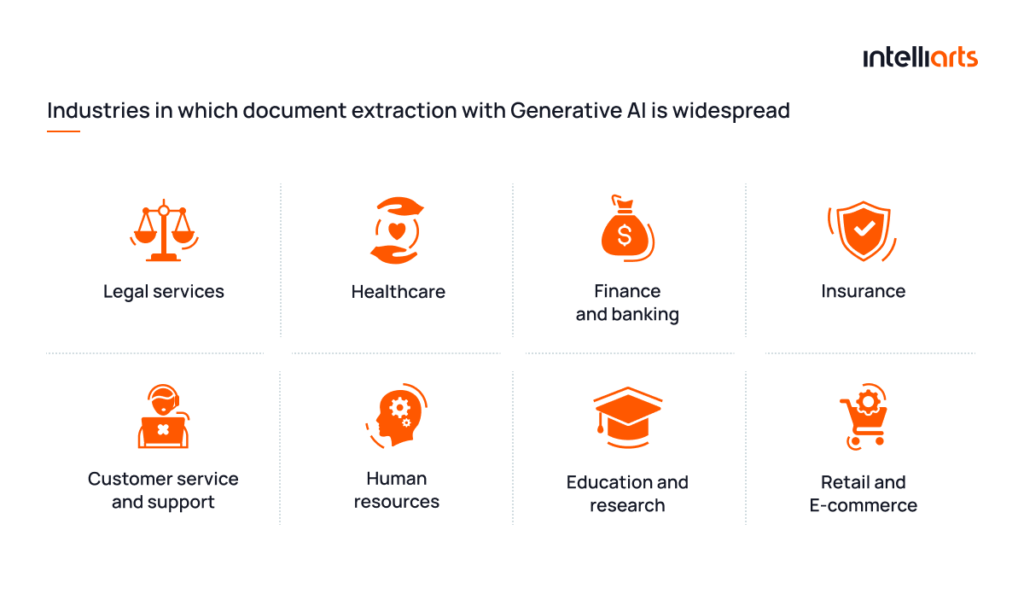
Challenges and Limitations of GPT-Based Document Data Extraction
As with any other technology, using AI to extract data from documents is not deprived of complexities you should be aware of. Here is a list of the major challenges of document data extraction via ChatGPT:
- Ambiguity and contextual errors: While GPT is good at general language tasks, it can misinterpret ambiguous terms, resulting in GPT not always discerning the correct meaning based on context.
- Difficulty with numerical data and visual elements: GPT models are primarily text-based. So, trying to extract statistical or mathematical data as well as analyzing complex document structures like tables, spreadsheets, or forms may not be error-free. It’s also true in the cases of dealing with PDFs that include images, diagrams, or graphs. For those, you’ll need additional tools that support OCR (Optical Character Recognition) and image recognition.
- Legal and ethical concerns: If you’re extracting sensitive or personal information, GPT doesn’t provide any built-in privacy safeguards. This poses risks in terms of data security, and you may face non-compliance with regulations like HIPAA or GDPR.
- Lack of accuracy and consistency: GPT can be inconsistent in its responses, even to the same questions about the same documents. So, it requires validation steps to ensure data reliability.
- Lack of domain-specific knowledge: This mostly concerns general-purpose GPT LLM since specialized models are typically well-trained on domain-specific data. So, it’s worth understanding that the general model may not understand jargon or complex terminology.
- Token limitation: Each GPT model has a maximum token limit, typically ranging from a few hundred to a couple of thousand tokens. This constrains the amount of text you can process in a single go, complicating the extraction from longer documents.
Document text extraction with ChatGPT can be recommended to utilize. However, it’s worth considering that the technology wasn’t specifically designed for this task. So, such solutions need customization and probably the use of additional instruments to become high-performance.
There are ways in which the listed challenges can be addressed through custom AI development. For example, a provider of such services can utilize a multi-modal approach, combining the benefits of different AI algorithms. Another opportunity is to add validation layers that check the accuracy and quality of ChatGPT model responses.
Future and Prospects of Document Data Extraction via OpenAI GPT
It’s possible to predict a growing utilization of data extraction using AI ChatGPT technology. The reason is that potentially, it can develop in the following ways:
- Improved structure recognition: Future iterations could be fine-tuned to better understand structured data like tables, forms, or even coded languages, thereby making GPT models more versatile in document extraction tasks.
- Ethical and legal safeguards: As AI ethics and regulations mature, built-in features for data privacy and compliance checks could become standard, mitigating legal and ethical concerns.
- Integrated multi-modal capabilities: Next-generation versions could potentially integrate with OCR and image recognition technologies to handle documents with mixed media, making them more comprehensive in their extraction capabilities.
- Error correction and validation: Advanced validation algorithms could be built in, either as part of GPT or as a complementary system, to automatically verify the accuracy of the extracted data.
- Real-time updating and learning: If future versions can be updated in real-time or even adapted on the fly, they could offer more current and context-sensitive data extraction, addressing the knowledge cutoff issue.
- Improved scalability: Advances in hardware and optimization algorithms could potentially address the token limitations, allowing for efficient processing of longer documents in one go.
- Collaborative AI systems: GPT models could work in tandem with other specialized AI systems for even more effective and nuanced data extraction tasks.
When it comes to data extraction using AI, despite the technology’s limitations as of 2023, it can be significantly improved over the next decade. So, adopting generative AI today is the first step to utilizing the advanced technology to its fullest extent in the near future.
Final Take
Using ChatGPT AI to extract data from documents has been proven useful to a variety of businesses and is becoming increasingly widespread. The technology can help to generate short summaries, extract key information, and more. However, it’s worth keeping in mind the challenges and limitations of the technology like lack of consistency, difficulty with numerical data, etc. Anyway, the future of document analysis with ChatGPT seems promising.
We Provide consulting, implementation, and management services on DevOps, DevSecOps, DataOps, Cloud, Automated Ops, Microservices, Infrastructure, and Security
Services offered by us: https://www.zippyops.com/services
Our Products: https://www.zippyops.com/products
Our Solutions: https://www.zippyops.com/solutions
For Demo, videos check out YouTube Playlist: https://www.youtube.com/watch?v=4FYvPooN_Tg&list=PLCJ3JpanNyCfXlHahZhYgJH9-rV6ouPro
If this seems interesting, please email us at [email protected] for a call.
Recent Comments
No comments
Leave a Comment
We will be happy to hear what you think about this post